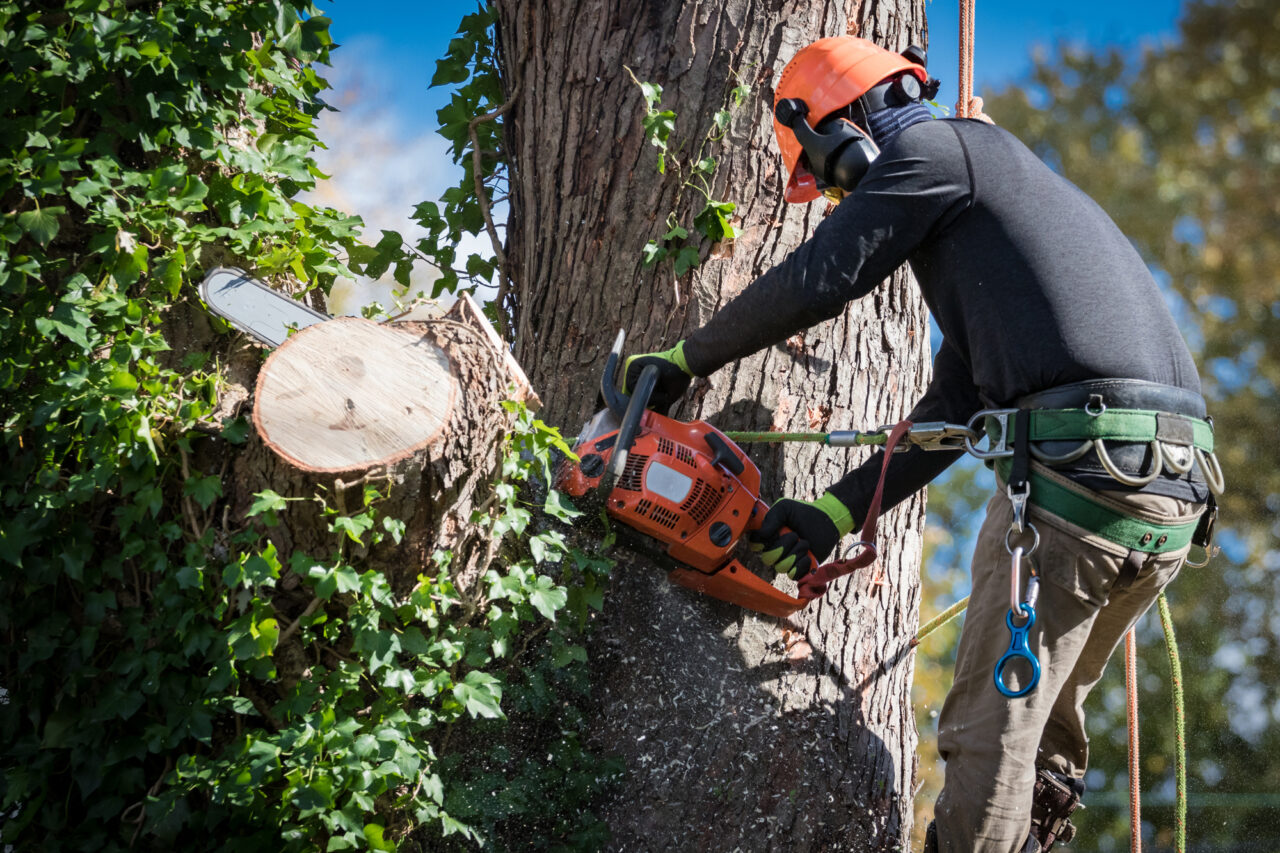Trees are always a great addition to any property as they provide lush beauty, cooling shade, and privacy. A dead tree is a great liability to your property and may very well pose a threat to a house and its inhabitants.
It’s devastating to witness the demise of one of our towering beauties, although at times it may be difficult to know whether or not the tree is ailing or actually dead and beyond saving.
There are techniques one can employ to discern if the tree is dead, or simply in need of loving care.
Some tell-tale signs of a dead tree include:
- Cracks, splitting or peeling in the trunk (creates a weakness that may lead to falling)
- Mushrooms growing near the tree’s roots
- Multiple branches that have no living buds
- Presence of pests such as bark beetles and carpenter ants
- Branches aren’t leafing out
- Cankers (discolored areas or depressed places on the bark)
- Hanging branches or missing leaves
- A sudden drastic lean in the tree (after a storm)
- Fine twigs without living buds near the ends of branches
- Cavities in the trunk or large scaffold branches
- Shallow and/or partially exposed root system
- A brown, brittle color under the bark (should be green and moist)
It’s a good idea to do a “scratch test” on a few twigs from different areas of the tree to check the color underneath the bark. If it’s green and moist, contact Tree Masters to determine the best methods to heal the sick tree. If the scratch test yields a brown, dry color, we may have to safely remove the tree from your property.
If your tree develops a lean of more than 15 degrees from vertical, this is a strong indication of wind and/or root damage. Most large trees that have tipped as a result of violent wind storms rarely recover and probably should be cut down.
When dealing with an ailing deciduous tree, keep a lookout for branches lacking lush greenery and show brown, brittle leaves during the normal growing season. Dying coniferous trees will start to present yellow, brown, or red needles in their canopy.
Should it fall, a dead tree can do irreparable damage to your house and property, and sadly, most homeowners’ insurances don’t cover tree damage if the tree should have been removed before a storm. This means that in the worst-case scenario the negligent homeowner will have to pay out-of-pocket for the damage.
Additionally, if a portion of your dead tree falls on a neighboring property or an innocent passerby causing death, damage, or bodily harm, you could be looking at years of litigation and exorbitant legal fees. Any arborist will advise you to mitigate the issue before there a serious problem arises – or more succinctly, comes crashing down
How Long Does it take For a Dead Tree to Fall?
Once a tree is completely dead and beyond saving, it’s anyone’s guess as to when it may topple. It could topple in days or it could take ten years. In some cases, it just falls with no provocation from the wind or weather. With dead roots, the tree simply cannot support its own weight any longer. The lifeless tree simply crumbles and crashes to the ground with potentially disastrous results.
The remains of the tree can be put to use by renting a wood chipper and making mulch for the rest of your gardening and tree planting needs. The dry, dead wood also makes fabulous firewood!
If there is any doubt in regard to the health of a tree, don’t hesitate to call Joe at Tree Masters to ascertain the damage.
Cutting down a large tree without the proper knowledge or equipment can have severe consequences. If you need to use a ladder to reach and large dead limbs, that tree is too big for you to remove safely.
Be smart and safe when it comes to your property and the removal of a dead tree! Call Tree Masters!
DISCLAIMER: Although an arborist can ascertain if a tree is dead or alive, and remove the tree if required, even an experienced arborist cannot predict when a tree or bough might fall. Once it has been determined that the tree is dead or dying, it’s always best to remove a tree as soon as possible.



